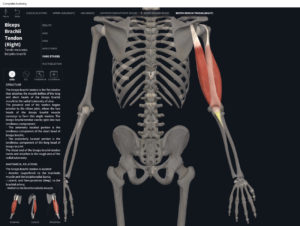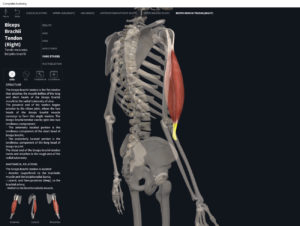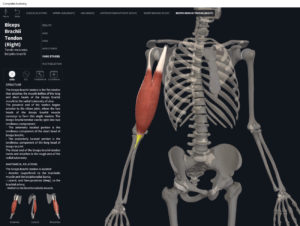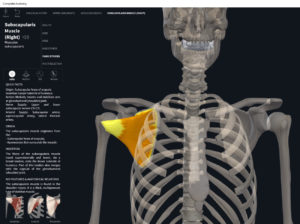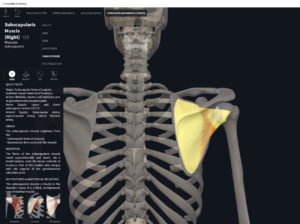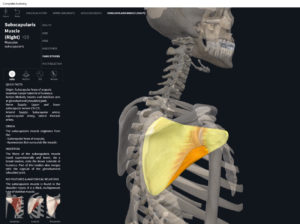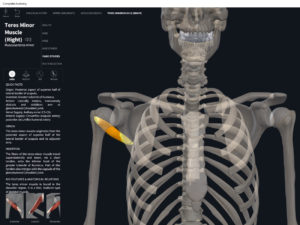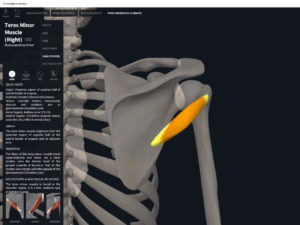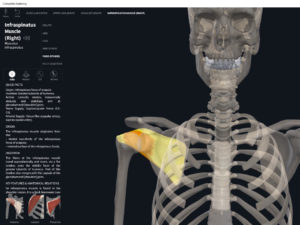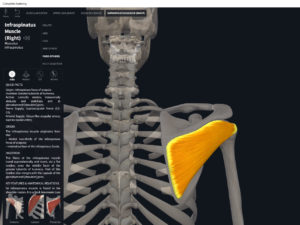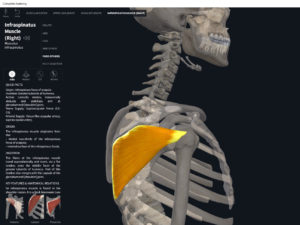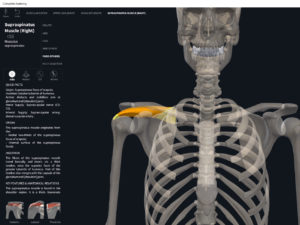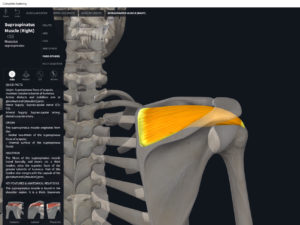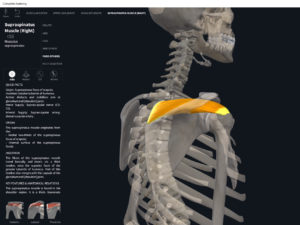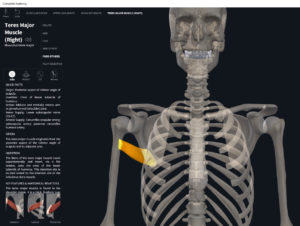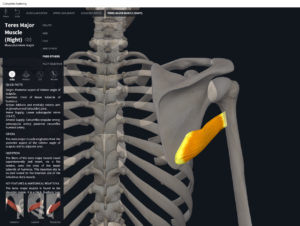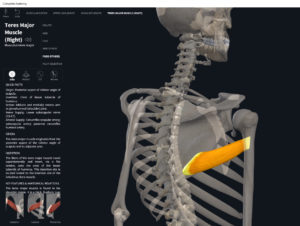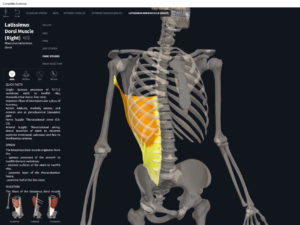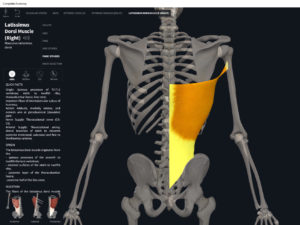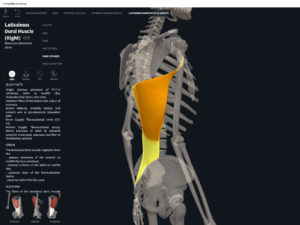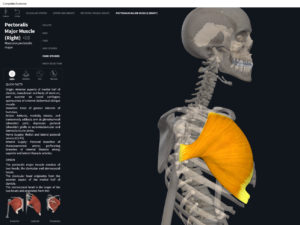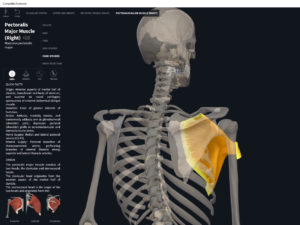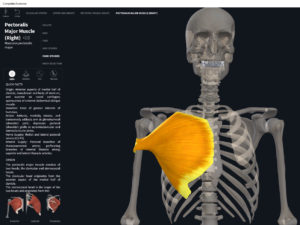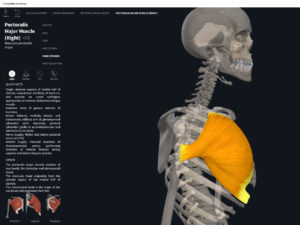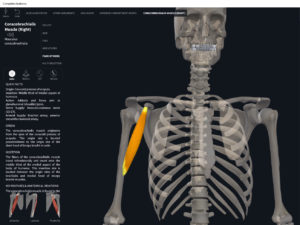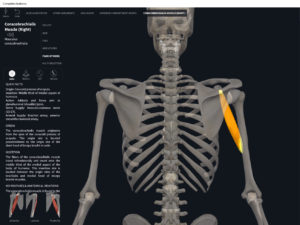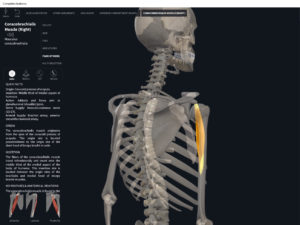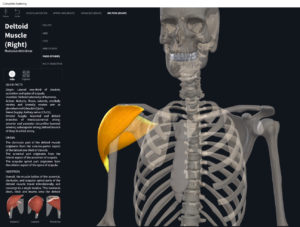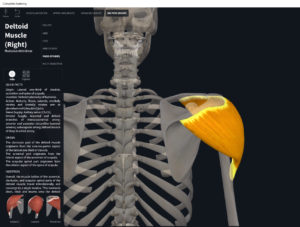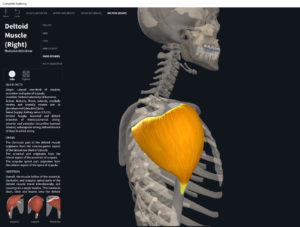Anatomy & Physiology: Muscles—Biceps Brachii.
Structure.
- Origin: short head—corocoid process; long head—tubercle above glenoid cavity on scapula (supraglenoid tubercle).
- Insertion: radial tuberosity of radius, and bicipital aponeurosis.
Function.
- Concentric action: elbow flexion, supination of radioulnar joint, shoulder flexion.
- Reverse mover action: arm flexion at elbow; supination; medial rotation at glenohumeral joint; upward tilt of scapula; scapular downward rotation; lateral tilt of scapula; scapular retraction.
- Eccentric action: elbow extension, pronation of radioulnar joint, shoulder extension.
- Isometric action: stabilization of the elbow and shoulder girdle.
- Innervation: musculocutaneous nerve.
- Arterial supply: branches of the brachial artery; anterior circumflex humeral artery.
Clinical Significance.
References
Biel, A. (2015). Trail guide to the body: A hands-on guide to locating muscles, bones and more.
Cedars-Sinai. (2018). Vertebrae of the spine. Retrieved from https://www.cedars-sinai.org/health-library/diseases-and-conditions/v/vertebrae-of-the-spine.html
Clark, M., Lucett, S., Sutton, B. G., & National Academy of Sports Medicine. (2014). NASM essentials of corrective exercise training. Burlington, MA: Jones & Bartlett Learning.
Jenkins, G., & Tortora, G. J. (2012). Anatomy and Physiology: From Science to Life, 3rd Edition International Stu. John Wiley & Sons.
Muscolino, J. E. (2017). The muscular system manual: The skeletal muscles of the human body.
